Missing OceanGate sub: New hope for tourist vessel
Hopes of finding the missing Titanic tourist sub have grown after a leaked memo revealed a stunning development.
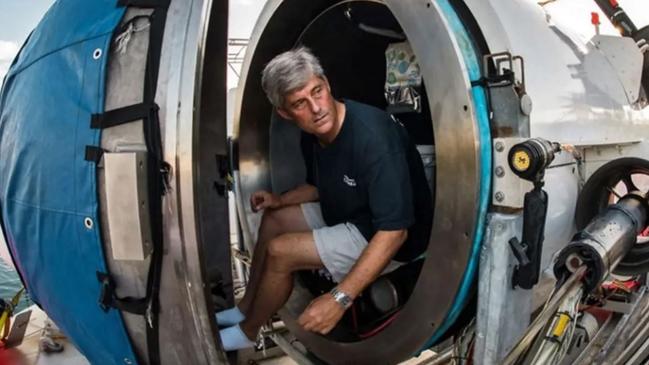
World
Don't miss out on the headlines from World. Followed categories will be added to My News.
Hopes of finding the missing Titanic tourist sub have grown after a leaked memo suggested “signs of life” had been detected at the site.
Richard Garriot de Cayeux, president of The Explorers Club, tweeted that “there is cause for hope”.
In a statement he said: “We have much greater confidence that 1) There is cause for hope, based on data from the field – we understand that likely signs of life have been detected at the site.”
It came after US media reports that a Canadian aircraft heard “banging” at 30-minute intervals in the area the submarine disappeared.
The banging was noted in emails exchanged with the US Department of Homeland Security and seen by Rolling Stone.
“Underwater noises” have also been detected by Canadian aircraft, the Boston air of the US Coast Guard tweeted on Wednesday.
Canadian P-3 aircraft detected underwater noises in the search area. As a result, ROV operations were relocated in an attempt to explore the origin of the noises. Those ROV searches have yielded negative results but continue. 1/2
— USCGNortheast (@USCGNortheast) June 21, 2023
“As a result, ROV operations were relocated in an attempt to explore the origin of the noises,” the tweet read.
“Those ROV searches have yielded negative results but continue.
“Additionally, the data from the P-3 aircraft has been shared with our U.S. Navy experts for further analysis which will be considered in future search plans.”
Earlier on Wednesday, the same Boston team shared photos of the search crews at work.
So far, more than 25,900 square kilometres of sea has been searched by aircraft for the missing vessel.


RESCUE ‘NOT GUARANTEED’
CBS reporter David Pogue told Nine’s Today show it was concerning that the crew had not used any of the methods, which included three “triple weights” that could be released for extra buoyancy.
Rescue teams are in a race against the clock to find the lost vessel, which has five people on board: wealthy tourists Hamish Harding, Shahzada Dawood and his son Suleman Dawood, French Navy pilot Paul-Henry Nargeolet and OceanGate CEO Stockton Rush.
The three fee-paying passengers who forked out $365,000 each for the experience are Harding, Dawood and his teenage son.
The seven resurfacing mechanisms on-board Titan include lead construction pipes called “triple weights”, two “roll weights”, ballast bags and self-dissolving bonds on the ballast bags.
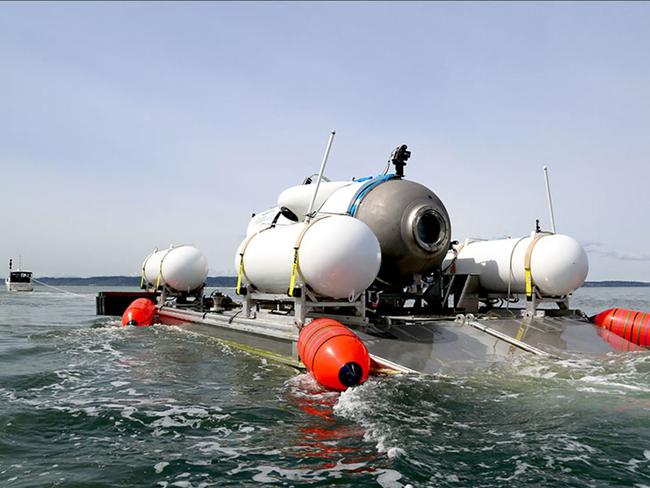
The sub is also equipped with thrusters to propel it upwards, detachable sub legs and an airbag to inflate.
Mr Pogue told Nine how passengers taking part in OceanGate’s expeditions were given safety drills in case of fire and that the seven ways of resurfacing included the dropping of heavy metal pipes and thrusters.
“The only thing they talk about is fire. So, they have a fire extinguisher on board and they have you practice with fire masks, smoke masks,” he told the Today show.
“But other than that, there really is nothing you can do in the event of a disaster, except to surface. And this thing has seven different methods of surfacing.
“There are sandbags they can drop, there are heavy metal pipes they can drop. There is an air balance loom, there are thrusters. So they have a number of different ways to come back to the surface.
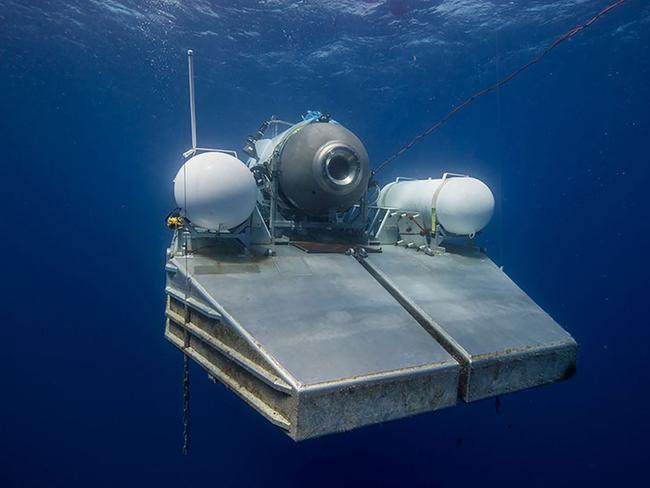
Mr Pogue said one of the methods would work even if all of those on-board had lost consciousness.
“I think what’s relevant today is that one of those methods works even if everybody has passed out.
“So there is a dissolving hook that holds sandbags. After a certain number of hours, the seawater deteriorates the hook, drops the sandbags, and the sub comes to the surface, even if you’re not controlling it.
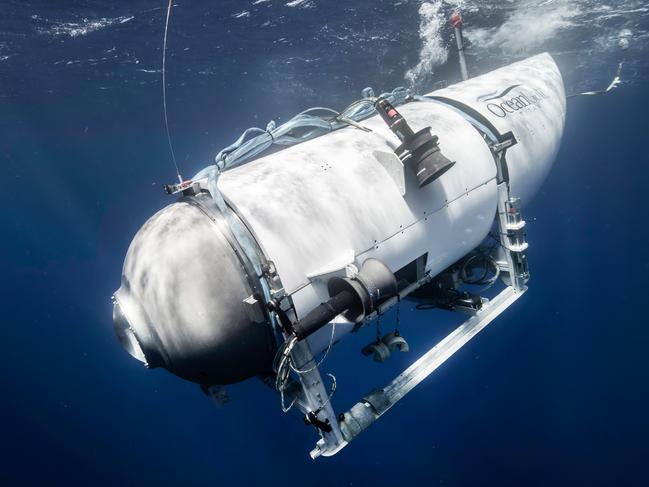
Mr Pogue said the sub got lost on the sea floor during one dive he heard about.
“It was never out of contact with the ship on the surface,” he told Nine. “But they couldn’t find the Titanic. They drove around in the dark for three hours before giving up and coming back up.”
It came as Mike Reiss, a writer and producer on The Simpsons who travelled on Titan in 2022, said he prepared himself to never get off the vessel after signing a waiver which listed “three ways to die on page one”.
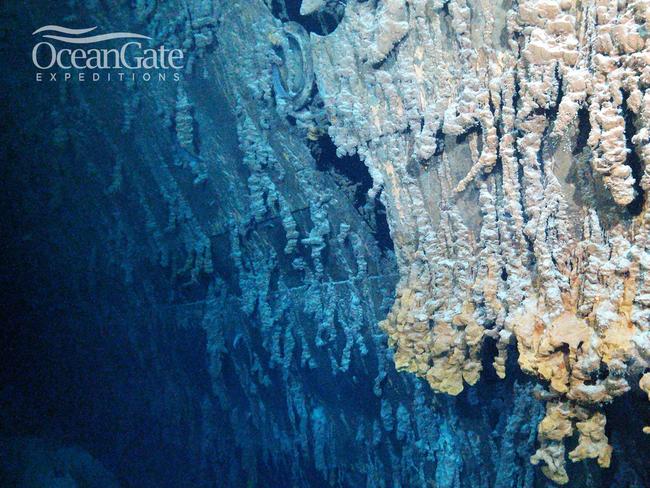
“I just feel for these people, my hopes are with them,” he said. “I am not optimistic, I know how tiny the vessel is and how huge the ocean is’.
“I got on the sub and at the back of my mind was ‘well, I may never get off this thing’,” that’s always with you,’ he told the BBC.
Mr Reiss said he had been on three separate dives, including the one to the Titanic, and that each had “lost communication”.
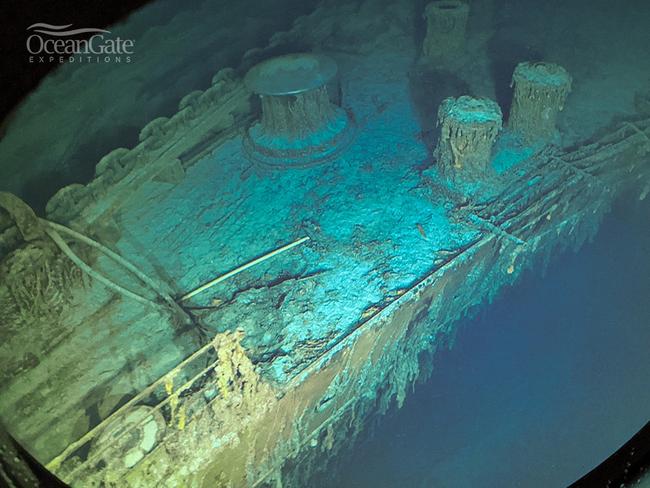
He said even though they made it to within 500 metres of the Titanic, the sub had to spend “a good 90 minutes just doing a random walk on the bottom of the ocean, just flailing around and trying to find the biggest boat in the world”.
The passengers on his expedition only had a short amount of time to see what he described as the “highlights” of the wreck.
‘Twenty minutes before we had to resurface we finally saw the Titanic and I have to say it was just enough in our case for a highlights tour, we looked at the anchor, looked at the porthole, looked at the bow of the ship and then we had to go back up,” he said.
“It shows you the unpredictability of it all. The next day they sent another five passengers down to see it and they circled it and got to see every inch of it.
BLEAK WARNING FROM US COAST GUARD
Search crews are racing against time with an estimated 40 hours of breathable air left in the missing submersible, Titan, which went missing on Sunday during a deep dive to view the wreckage of the Titanic.
In a grim warning, the US Coast Guard said it may not be able to rescue the sub even if it is able to find it.
At a press conference at the US Coast Guard Station in Boston, First District Response Coordinator Capt. Jamie Frederick said rescue was not guaranteed.
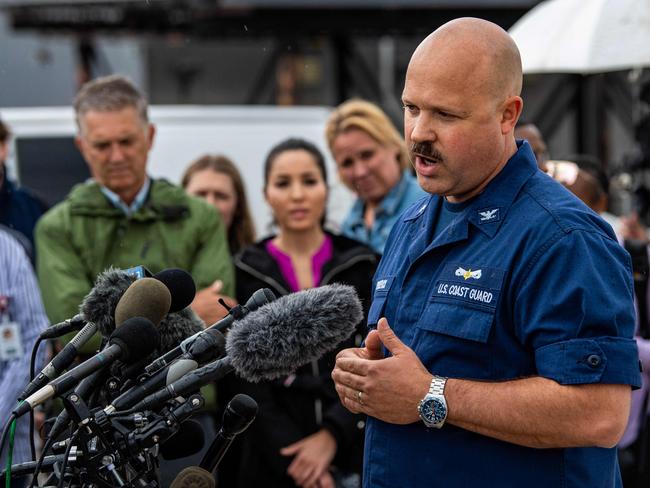
He was asked: “Even with that amount of time left, if you were to find the submersible at this moment, would that give you enough time to save those five people on board?”
“I don’t know the answer to that question... all I know is we will do everything within our power to effect a rescue,” he said.
The US Coast guard is leading a wide search operation around 600 kilometres off the coast of Newfoundland where the wreckage of the Titanic is located 3,800 metres below the surface.
The UK government has said it is poised to assist the US and Canada in the hunt for the missing sub, which disappeared on Sunday about one hour and 45 minutes into its journey.
Britain’s Ministry of Defence said it was monitoring the search while British officials said the depth of the ocean in the search area, which is about the size of Greater Sydney – exceeds the depth at which NATO’s Submarine Rescue System can safely operate.
The 10,432kg Cyclops-class submersible is only capable of providing 96 hours of oxygen, according to OceanGate’s website.
Downing Street said it was ready to provide support and assistance if needed.


“Clearly it is a complex rescue mission at significant depth,” the British Prime Minister’s official spokesman said.
“We are in contact with the relevant authorities and are ready to provide assistance, but clearly it is an unusual rescue operation given the depths involved.”
A spokesperson for Rishi Sunak said his thoughts are with the families of those involved in the missing vessel.
The British Prime Minister’s official spokesman said: “The families involved will be deeply concerned and his thoughts are with them and the Foreign Office is providing support.”
The US and Canadian Coast Guards have deployed ships and planes in an intensive search for the vessel.
Rear Admiral John Mauger, leading the search, told ABC News that rescuers had scoured an area of about 13,000 square km.
Mauger said a P-3 plane from Canada has dropped sonar buoys in the area of the Titanic wreckage to listen for any sound from the small sub.
He added that the search, initially restricted to the ocean’s surface, is now going under water as well.
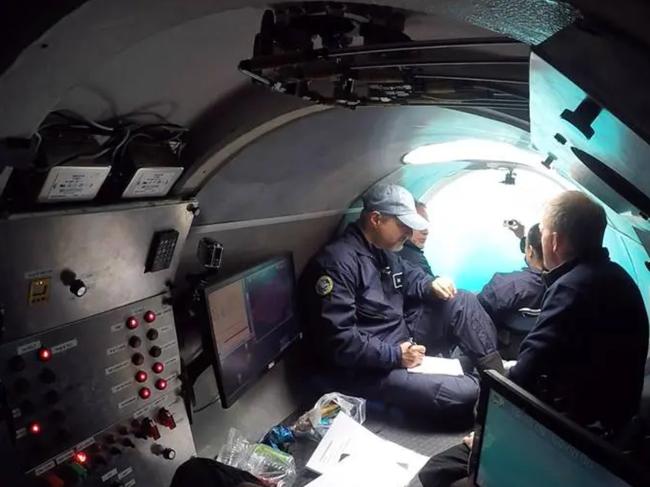
France’s oceanographic institute said it was sending a deep-sea underwater robot to aid efforts.
In an Instagram message posted just before the dive, Harding said a mission window had opened after days of bad weather, which meant it might be the only such trip in 2023.
The Titan lost contact with the surface less than two hours into its descent, according to authorities.
“We are exploring and mobilising all options to bring the crew back safely. Our entire focus is on the crew members in the submersible and their families,” OceanGate said in a statement.
Experts fear the vessel, which can reportedly be unlocked from the outside only, has possibly surfaced and is waiting to be found, or has suffered a leak and sunk to the bottom of the ocean.
“The clock is ticking, and any submariner/submersible deep divers know how unforgiving the Abyssal domain is: going undersea is as, if not more, challenging than going into space from an engineering perspective,” said University of Adelaide associate professor Eric Fusil in a statement.

RACE AGAINST TIME
The survival of the five people on board Titan may depend on the skipper’s ability to keep his passengers calm.
Oxygen supplies on the submersible craft are expected to last until Thursday afternoon (Australian time), putting authorities in a desperate race against time to locate the vessel, which lost contact with its support ship the Polar Prince one hour and 45 minutes into its descent.
Frank Owen, a former Submarine Escape and Rescue Project Director with the Royal Australian Navy, said the bottled oxygen on board the Titan was now a “resource to be managed” and survival could depend on how the passengers “manage their own metabolism”.
“When you panic you breathe faster, your heart rate increases, and you generate more carbon dioxide,” Mr Owen said.
“If you slow down or sleep you will produce much less carbon dioxide.”


While the skipper could “almost certainly” vary the amount of oxygen released on board, the amount of carbon dioxide in the air could ultimately prove to be a “bigger problem,” if it overwhelmed the vessel’s air filtration systems, Mr Owen said.
US and Canadian aircraft as well as ships have been deployed in an attempt to locate the Titan, which was directly over the wreck of the Titanic at the time it sent its last sound wave “ping”.
Former Rear Admiral Chris Parry told Sky News the submersible “could have become entangled in the wreckage” – a nightmare scenario for rescuers, given the Titanic sits at a depth of 3.8 km on the Atlantic seabed.
“We are doing everything that we can to make sure that we can locate and rescue those on board,” Rear Admiral John Mauger of the US Coast Guard, head of the rescue operation, said.
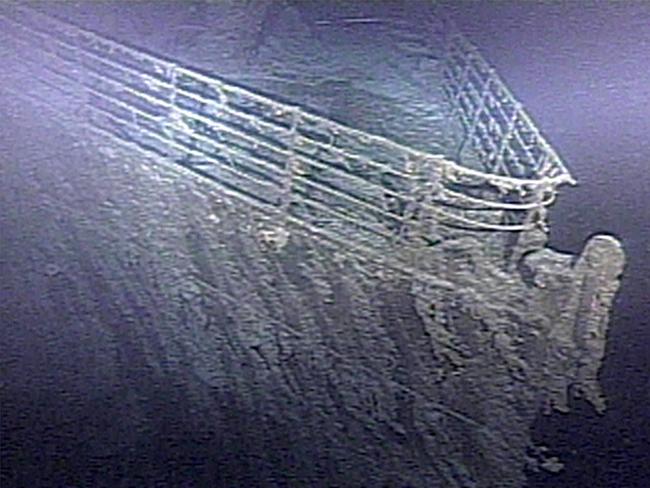
There were confusing reports over who was actually on board, with the names of six possible passengers mentioned for the five-person vessel.
British billionaire Hamish Harding and his wife Linda, French diving expert Paul-Henry Nargeolet, a veteran of 30 dives down to the Titanic, and Stockton Rush, the CEO of OceanGate Expeditions, the company which operates the Titan, were all reported to be on board.
But later on Tuesday the family of Pakistani businessman Shahzada Dawood said he and his son were also on the Titan, while the presence of Harding’s wife on the vessel has not been confirmed.
Mr Owen said it was clear the Titan was in distress because if the vessel’s communication systems were malfunctioning but its propulsion systems were still operating, procedure dictated that the submersible should come back to the surface.

The Titan was equipped with “drop weights” – large masses of metal held to the side of the hull by cables, which could be manually cut, allowing the vessel to ascend, Mr Owen said.
In a statement, OceanGate Expeditions said they were “exploring and mobilising all options to bring the crew back safely”.
“Our entire focus is on the crew members in the submarine and their families. We are deeply thankful for the extensive assistance we have received from several government agencies and deep sea companies in our efforts to re-establish contact with the submersible. We are working toward the safe return of the crew members.”

But a January 2023 report on the Titan by CBS journalist David Pogue, which was widely shared on social media on Tuesday, raised questions about the vessel’s safety. In that report Mr Pogue said he “couldn’t help noticing” how many of the vessel’s components seemed “improvised”.
Speaking to NewsNation on Tuesday, Mr Pogue said the Titan had seven different mechanisms to ascend to the surface, several of which could operate “even if the power is gone”.
“If they are alive, they should have been able to get to the surface using one of these methods,” he said.
But it was possible the vessel was snagged by wreckage, or perhaps by a discarded fishing net, he added.
Associate Professor Eric Fusil, Director of the Shipbuilding Hub at the University of Adelaide, said strong undersea currents could have caused the vessel to become entangled.
“A wreck, such as the Titanic, can present tricky spots if coming too close, where the Titan could get trapped and struggle to free herself,” Assoc Prof Fusil said.
Originally published as Missing OceanGate sub: New hope for tourist vessel




